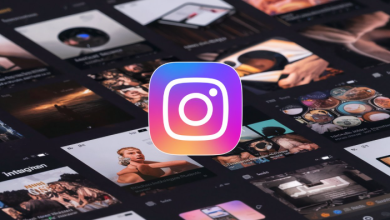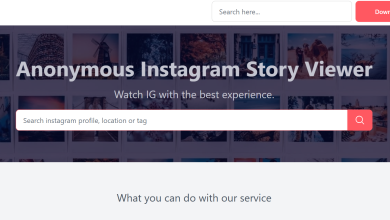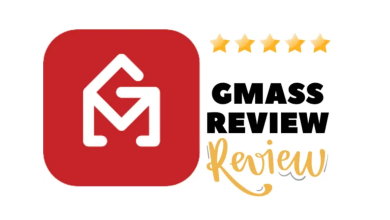
In this new age of high technology, when things break through new innovations day by day and internet fads come and go with an eye blink, hard facts are not just an asset—a necessity. You might be a seasoned computer ace or a ready-to-roll newb, but to know how to find clean, clear, and current facts can mean surfing the cyber tide with confidence or getting swept underneath by the undertow. So come on in, CNET, the seasoned news site that’s earned the confidence of millions of individuals worldwide. From its print editions in CNET magazine to its massive online presence, CNET is a source to be relied upon for everything about technology.
A Trusted Legacy in Tech Journalism
CNET started in 1994 and turned into one of the world’s most reliable tech review and news sites. CNET expanded and added content as technology around the world evolved, from consumer electronics to computing, mobile, smart home, digital services, and emerging technologies such as AI and VR.
What sets CNET apart from others is its journalism integrity and commitment to in-depth research. It offers professional reviews from experts who test products to a significant extent so that users can gain from balanced and comprehensive critiques. This quality was the hallmark of the CNET magazine, which transformed digital content and brought it down to bite-sized print form for readers who liked to consume information the traditional way.
This blend of careful reporting and plain English allows CNET to meet the needs of two radically disparate audiences: tech enthusiasts needing careful analysis and comparisons, and technology beginners needing clear, easy-to-understand descriptions.
CNET for Tech Enthusiasts
A theme park of geeks is what CNET is. It has reviews with a technical depth nature, comparisons of products, and details of upcoming inventions, which other media may match in terms of depth or understandability, but not depth as in terms of clarity. IT geeks, gamers, and IT professionals see in CNET its limitless procession of high-spec computers, game-altering smartphones, and even science-oriented future technology yet to come into the R&D stage.
It’s really the quantity of data itself that draws this group to CNET. Benchmark testing, battery testing, design scoring, performance metrics, and even repairability scores are all included in a typical CNET review. Geeks devour this kind of data reporting and can make well-informed buying decisions on what to buy or what to upgrade to next.
Apart from that, the editors also offer context insight—why a certain phone beats another even if its features seem totally similar, or how significant the new chip is going to be in real life. Such analysis makes reading CNET a one-stop shop for us tech nerds with an unreasonable craving to learn the “why” of it all.
CNET for Tech Newbies
Conversely, there are individuals who are not necessarily technologically inclined but wish to be. If they’re a parent buying a tablet for a kid, a student buying the cheapest laptop on the market, or an older adult learning about smart home technology, CNET needs to be friendly to beginners without patronizing them.
All of CNET’s how-to posts, video explainers, and reporting are included. They take some abstract ideas, such as cloud computing, a VPN, or encryption and deconstruct them in a way accessible to ordinary people, sometimes resorting to images or analogies to help further demystify the subject in question.
For example, the “How to Choose a Router” tutorial is not elitist and tells one that one’s actually supposed to be some kind of super-intellectual or whatever. Such technobabble jargon as “dual-band,””mesh network,” or “gigabit speeds” is described in simple language so one can feel comfortable learning and spending money on things. This model of learning allows computer beginners to acquire skills without becoming confused or stereotyped.
The Place of CNET Magazine
In an era of bits and bytes, where information is often taken in bits, CNET magazine served some purpose: it was an edited, paper edition of CNET’s good stuff. Page-flippers who were not feed-surfers could find considered reviews, editorials, and buying guides in a decent, readable package in CNET magazine.
Though its print edition died, its death was silently served by newsgroup posting, its legacy remains with the magazine. It set a standard of professionalism, trust, and readability that still guides CNET’s web publishing, newsletters, and multimedia today. To readers who came before it, it gave them an heirloom of trust that remains to this day.
CNET’s Editorial Independence
Editorial freedom is perhaps the most significant reason why veterans and newcomers alike trust CNET. It is not written under brand fanboyism or ad pressure, but under real testing and use. This has been actively maintained by the editorial staff with the purpose of serving consumers, instead of encouraging the sale of products.
CNET is well to differentiate between advert and sponsored as well as editorial content. Transparency must be present where the difference between journalism and advertising can be like nothing. It is well believed and trusted that if CNET explicitly makes it known, everyone is aware that CNET does so without any doubt in the shadow.
Real-Time Updates and Tech News
Technology never takes a break—and neither does CNET. CNET leads the way with a rich news team breaking stories on product launches, tech events, hacks, and company news. When Apple introduces a new iPhone or Google rolls out new privacy policy changes, CNET is going to analyze it, explain it, and place it in context with Perspective.
It does this without losing pace. The news gets revised with fresh facts, corrections newly published, and all such worried experts surveyed to provide a fair impression. This works best with events like CES (Consumer Electronics Show), where CNET’s breaking news pieces and follow-ups take readers through the deluge of products unveiled.
A Community of Tech Enthusiasts
CNET also boasts an equally active community in comments, newsletters, and social networks. Two-way conversation of this nature allows readers to ask questions, offer commentary, and engage in smart discussion. For technology novices, it’s a mechanism to learn; for technology enthusiasts, it’s a discussion forum to argue over specifications, performance rates, and technological trajectory.
Community is created via the welcoming voice and blended material of CNET. As far as there would perhaps be potentially some technology sites that would become cliquish or cultlike with the visitor, CNET is open to every single person, regardless of where one is.
For the visually inclined audience, there is yet one more level of interaction with the CNET YouTube site and review videos. They are in the form of unboxing and first-hand reviews, tutorials, and tech explainers. The presented format is good for those who detest reading a lengthy review but would still like to gain an idea about what a product or topic is all about.
In addition to this, they also match the tone and persona of the CNET magazine in order to get media-friendly and uniform. With the multimedia presence in such a manner, CNET hence becomes within grasp and accessible for any possible group of users, independent of their form preference towards the content type.
Final Thoughts
In a time of authenticity where greater is better, more is worse—some is convenient, some is irrelevant—the CNET is a light of faith and integrity. It delivers news and accuracy that techno-sheep search for. To the neophyte initiate, it offers direction, instruction, and empowerment. With quality journalism, high standards, and devotion to its users, CNET is a deserving tool upon which one can place faith in the digital age of uncertainty.
While the CNET magazine no longer occupies mailboxes, its legacy lives on in every in-depth review, useful guide, and breaking news story that the brand publishes. To anyone looking for a guided tour of the enchanted realm of technology, CNET is a friend and a guide.





